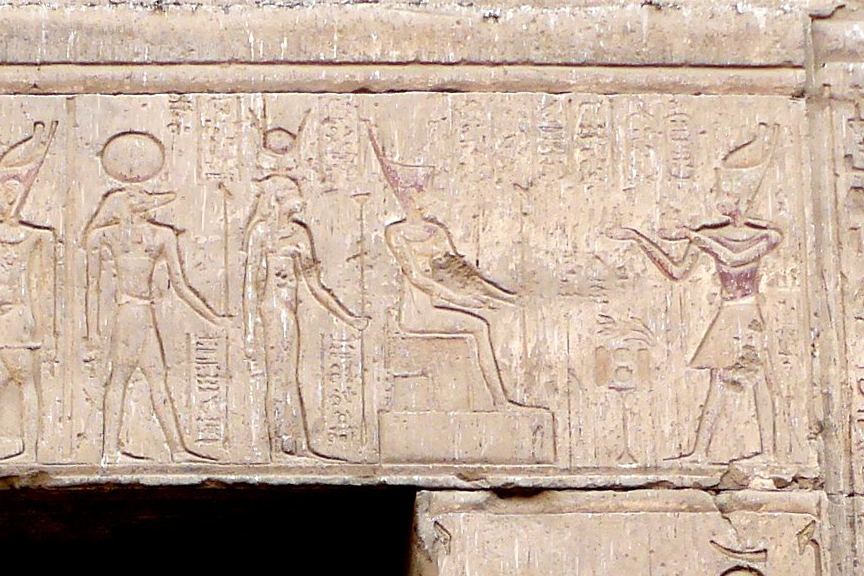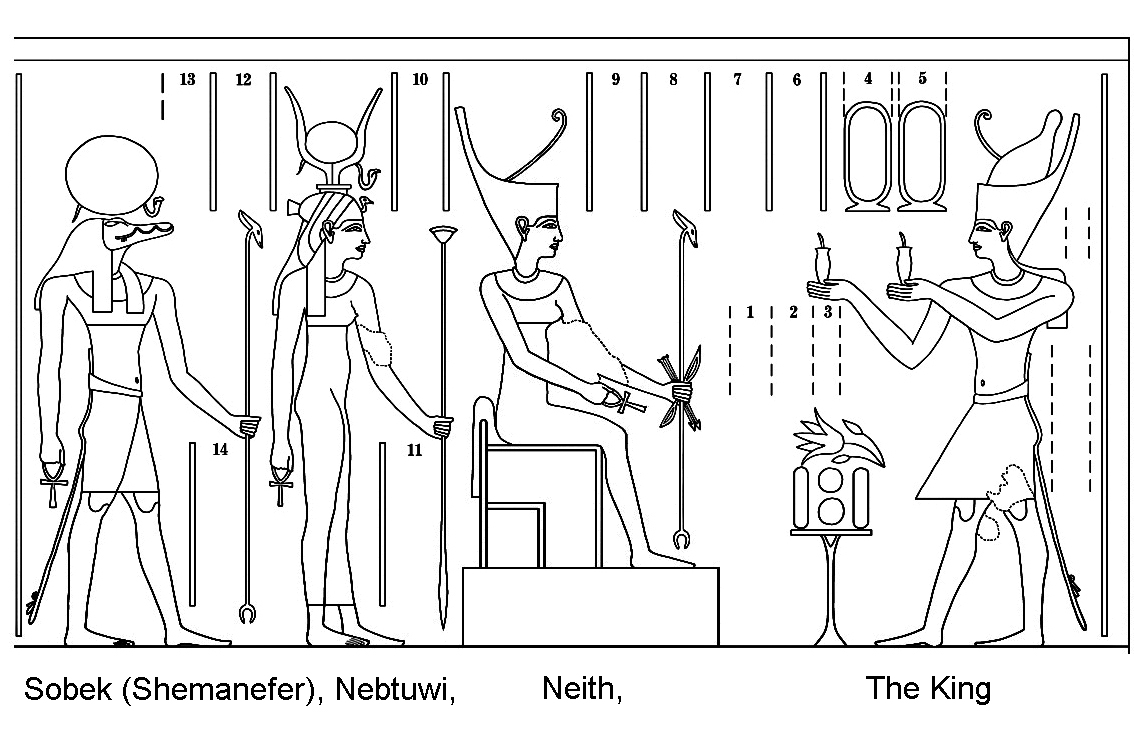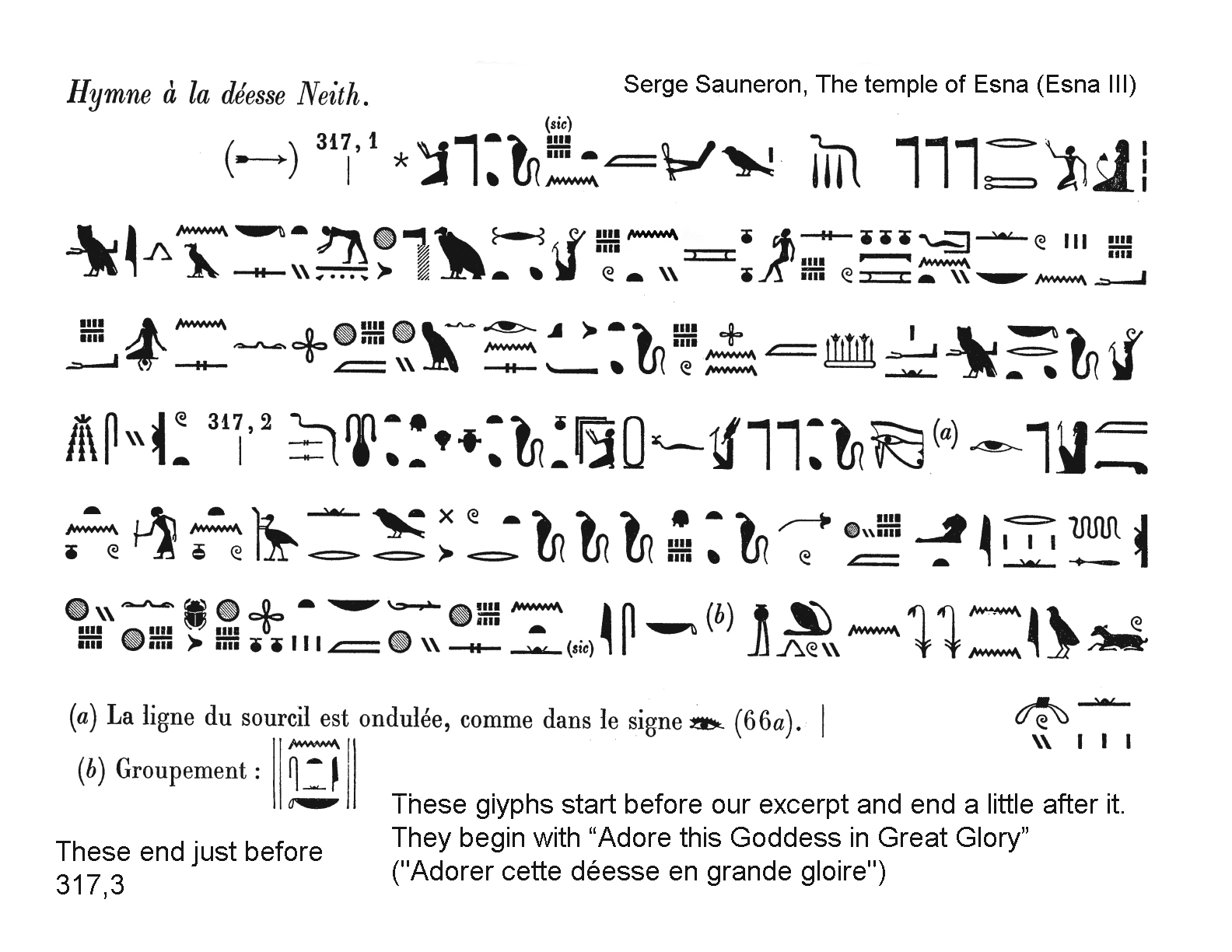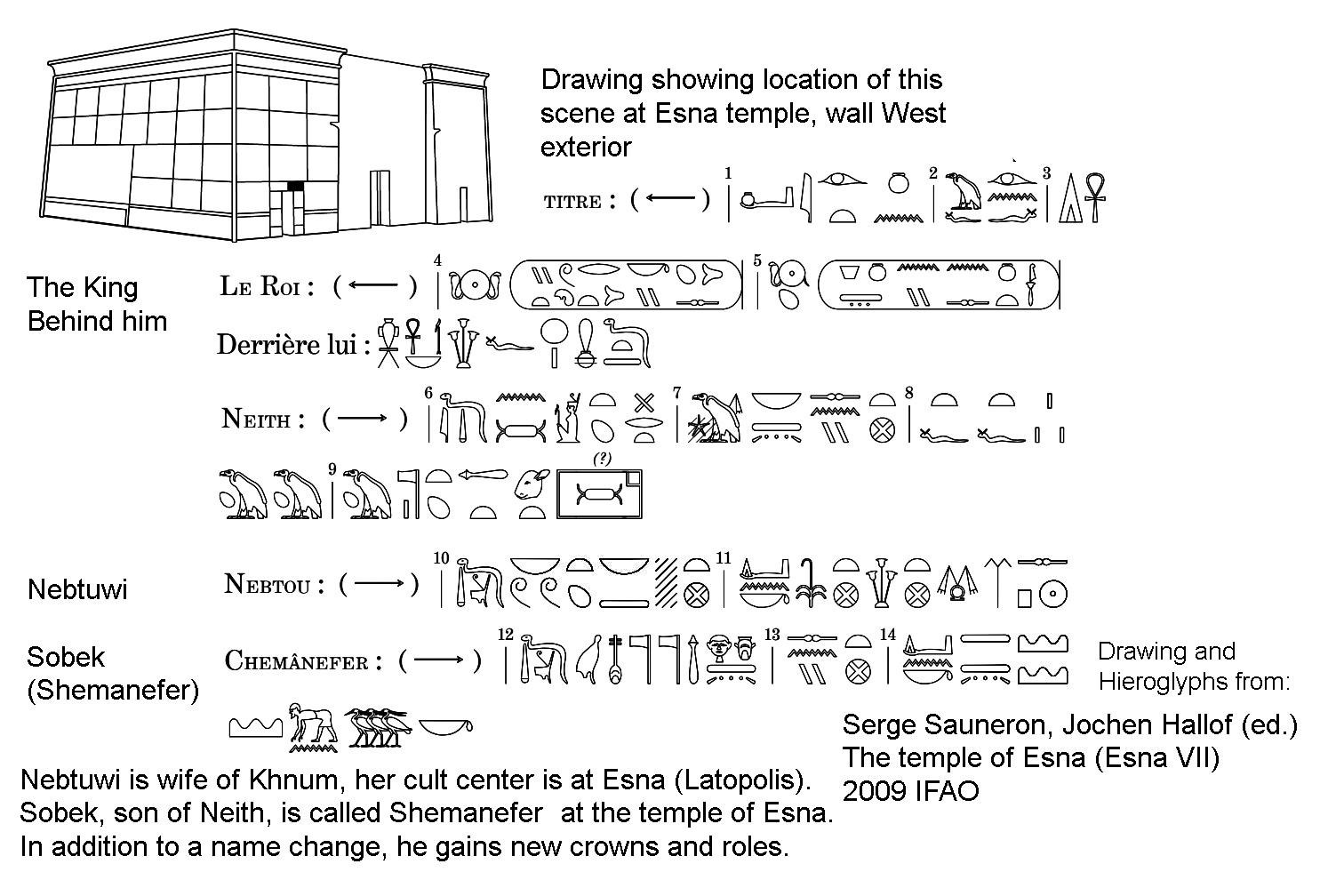
Sunday, February 28, 2021
Scene with Nit
7:31am
But in this case, they haven't! Learning that the temple at Esna (Latopolis) was her main center of worship, I imputed that into the search parameters.
But I mostly saw only lots of reliefs featuring Khnum, a lion headed deity, a crocodile headed deity and a deity wearing the "Hathor crown".
Only one photo features a tiny Nit sighting, up high on the upper right of a temple entrance.

Marie-Hélène Cingal shared the photo, of which the crop above is only a tiny area.
It is good to see Nit's crown still retains some red paint.
Having learned Serge Sauneron wrote a series of books on this temple, I took to the web and pdfs. I started with book six, and found LOTS of scenes with Nit in them! I'm figuring the photo scarcity is reflecting the general paucity of the public's interest in this great goddess. Any search for statuary will reveal you have only two easy options (outside of creating one yourself or finding a willing artist): a resin version based off of the Four Ladies version in Tutankhamun's tomb, or a version based on a museum statue that you must have commissioned in the medium of your choice.
(Well, there HAD been three, a small bronze of her based on a statue at the Hermitage, but I nabbed the last cast of that!)
The seventh in the IFAO Esna series co-written by Sauneron (posthumous publication) with Jochen Hallof proved to draw light on this exterior image:

Sobek (Shemanefer), Nebtuwi, and Neith, with the King giving offerings.
The translation for these glyphs may be in another one of the Esna books. If it is there, it would be in French, and I'd have to take to reverso.net to attempt a translation.
There are precious few options for learning about the temple of Esna in English. I discovered the following excerpt from Flaming Lioness, which features translations of many hymns to Nit, which had been only available prior in Sauneron's French translations:
I'd always viewed Nit as "Great Grandmother Nit", so calling her "Great Ancestor" really resonates. Also, I think of Julia's abundant work in discovering her ancestors.
|
|
There is a neat thing (neat Nit, grin) about where these hymns are placed, in this temple. There are eighteen columns, upon which they are placed. Eighteen is a multiple of nine, a magical number. The columns give support to the roof, as people's praise give support to the gods to strengthen their work in the world.
I was able to sync the French translation with the hieroglyphs, because Sauneron gave pointers. The text begins at "317,1" and the glyphs begin at "317,1":

These glyphs start before our excerpt and end a little after it.
They begin with "Adore this Goddess in Great Glory"
("Adorer cette déesse, en grande gloire")
